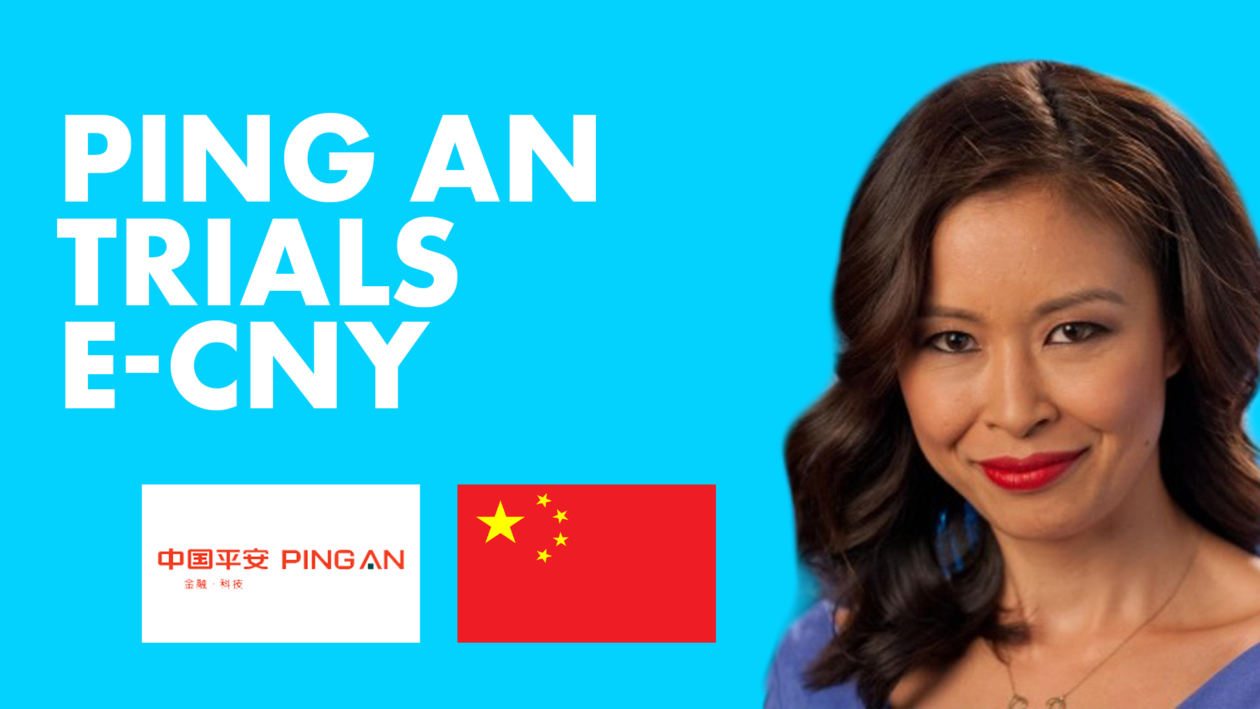China’s Ping An insurance joins trials of the digital yuan.
Crypto miner Core Scientific to go public.
China tries out blockchain enabled shipping cargo release system
We’ll have more on that story — and other news shaping the cryptocurrency and blockchain world — in this episode of The Daily Forkast, July 22.
Transcript
Welcome to The Daily Forkast July 22nd, 2021. I’m Angie Lau, Editor-in-Chief of Forkast News, covering all things blockchain.
Coming up, China’s Ping An Insurance joins trials of the digital yuan.
Core Scientific to go public via SPAC to expand mining for crypto;
and China tries out blockchain in the shipping industry to speed up deliveries.
Let’s get you up to speed from Asia to the world.
We’re starting to see digital currency in China’s insurance markets.
China’s Ping An has joined the country’s E-CNY trials by allowing its use as payment for insurance policies.
Ping An is one of China’s biggest insurers, and it’s offering policies to medical staff in the eastern coastal city of Shenzhen, and an extra incentive is to use E-CNY.
Now, the policies include payouts for illness with 50,000 renminbi or almost US$ 8,000 paid out for holders confirmed with Covid or 300,000 renminbi or around US$ 46,000 compensation should they pass away from Covid-19.
In order to encourage people to try using the digital currency, discounts are actually being offered for those who choose to pay using the digital wallet.
Meanwhile, the crypto mining industry is getting a boost.
Crypto miner Core Scientific is going public on Nasdaq via a SPAC listing, merging with Power and Digital Infrastructure Acquisition Corporation, or XPDI.
Now the deal with this special purpose acquisition company, better known as SPAC, is subject to the approval of shareholders and values the combined company at around US$ 4.3 billion.
Core Scientific plans to raise US$ 300 million in net proceeds and plans to spend it on mining equipment and infrastructure build outs.
One of the investors, Celsius, invested US$ 200 million in Core Scientific, Rhodium and Luxor last month, and CEO Alex Moshinsky told me the deal is great for the investor ecosystem.
“Obviously it’s phenomenal news, not just for Celsius, but also to our entire community, because their investment is doing very well. With Core or with Rhodium or with other companies, that is a guaranteed source of Bitcoin so that we don’t care what happens on exchanges or DeFi or institutions, if we have a factory that every ten minutes print six point twenty five Bitcoin.”
It’s not yet clear when trading will begin. But as more mining rigs leave China, we can expect more mainstream exposure as miners set up shop in communities in the West.
And onto the markets today, Bitcoin up just over 4% at a little over US$ 32,000. That’s as of 4 p.m. local Hong Kong time, at the end of what was a risk on day for investors in Asia.
And in the top ten for crypto currencies, DogeCoin up just over 8% and Ethereum extended its climb after Elon Musk confirmed that he holds ETH, up almost 7% during Asia hours.
And could we soon see faster shipping times thanks to blockchain?
The shipping industry is getting a blockchain makeover, you could say. And we’ll see time spent in ports dramatically reduced with the rollout of the blockchain based Cargo Release system.
Developed by the Global Shipping Business Network, or GSBN, it’s designed to enhance efficiency.
Now there’s a lot of paperwork in shipping, and the new blockchain based system simply called “Cargo Release” replaces what has been a laborious process, which depends on a lot of people manually filling out vast amounts of paperwork.
Instead, it will all be digitized – the shipping supply chain, from end to end, on blockchain – allowing cargo to be released at its destination paper free.
GSBN, a consortium which was founded by a group of eight global shipping lines and terminal operators to build data infrastructure, says this could solve the disruption the industry is currently facing from a lack of equipment in the right places.
“The supply chain itself actually is overextended, so introducing new technologies such as blockchain and changing the way the shipping line terminal operating and providing more transparency, getting better information will actually remove some of the constraint and hopefully bring better service, better experience for the users.”
GSBN says the system can reduce the turnaround from days to just hours.
And that is The Daily Forkast from our vantage point right here in Asia. For more, visit Forkast.News. I’m Editor-in-Chief Angie Lau. Until the next time.

